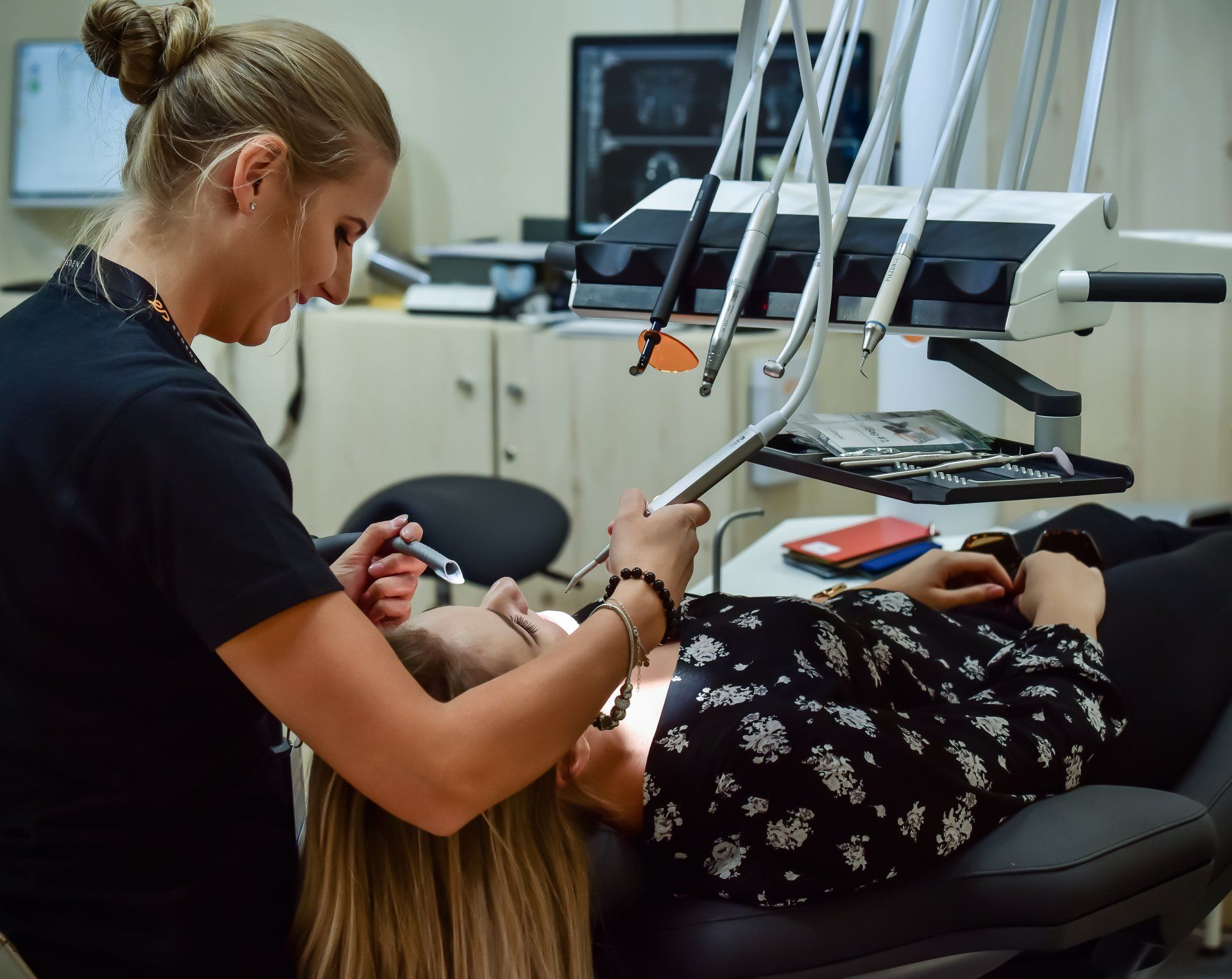The SEO for Doctors Guide: Getting to the Top of Google
In today’s digital age, more patients than ever turn to search engines like Google to find healthcare providers and medical information. That’s why SEO for doctors is crucial. Whether your practice is small or large, SEO, or Search Engine Optimization, will help you create a strong online presence to attract new patients and grow your practice.
SEO is the practice of optimizing your website to rank higher in search engine results pages (SERPs). The higher your site ranks, the more likely potential patients are to find you. In fact, the top 5 organic results claim
69.1% of all clicks. That means if you’re not ranking up there, you’re losing out on traffic from SERPs.
If you’re wondering how to even start with SEO for doctors, you’ve come to the right place. We’ve put together an in depth guide on local SEO for doctors to help you get started. We’ll cover the benefits of medical SEO as well as practical tips for optimizing your website and showing up on Google searches.
The Benefits of Medical SEO
If you’ve never used SEO for doctors, you may be wondering what the big deal is. It may seem like a simple tactic, but it can do wonders for growing your practice. In fact, here are some of the many benefits of SEO for doctors:
Higher search engine rankings: Using the right SEO strategies will improve your website’s rankings on Google and Bing. Higher rankings mean your practice appears at the top of the SERP, making it more likely for new patients to find you.- Reach local customers: One of the key strategies of SEO for doctors includes focusing on local SEO. This helps you rank higher on local search results to reach patients that live near your practice. Patients often include phrases like “near me” in their search for a new physician, and local SEO for doctors helps you capture some of those local patients.
- Targeted traffic: SEO for doctors attracts visitors that are searching for your specific medical services by including your website in relevant searches. This targeted traffic is more likely to convert into actual patients.
- Improved conversion rates: SEO for doctors optimizes your website with relevant content and a user-friendly design, which in turn leads to improved conversion rates. That’s because patients are more likely to contact your practice if your website is easy to use and informative.
- Lower cost marketing: Another major benefit of SEO for doctors is how cost-effective it can be, especially compared to Pay-Per-Click (PPC) advertising. SEO is an affordable alternative that drives organic traffic to your site without the costs of PPC campaigns.
- Long-term benefits: Unlike paid advertising, which stops generating traffic once the budget runs out, SEO provides long-term benefits. Once you achieve high rankings, maintaining them requires less investment than continuously running ads.
- Keeping up with competitors: Even if you’re not already investing in SEO, your competitors are. If you want to stay competitive, you need to implement effective SEO for doctors strategies so your practice doesn’t get overshadowed by competitors.
- Better user experience: SEO involves optimizing your website for a better user experience. This includes faster load times, mobile-friendliness, and easy navigation. All these things make it easier for patients to find the information they need and more likely to contact you.
- Measuring success: SEO for doctors allows you to track various metrics, like organic traffic, bounce rates, and conversion rates. This data helps you measure the success of your marketing efforts to make data-driven decisions for future strategies.
- Improved reputation: SEO for doctors involves managing online reviews. Positive reviews can significantly influence potential patients’ decisions and improve your practice’s overall reputation.
Local SEO for Doctors
Local SEO is the process of optimizing your online presence to attract more business from relevant local searches on Google, Bing, and other search engines. These searches typically include phrases like “near me” or the name of a specific location (e.g., “dermatologist in Boise”).
Some key components of local SEO for doctors include:
Claiming and optimizing your Google My Business (GMB) listing- Using consistent NAP (Name, Address, Phone Number) information across all online directories and platforms
- Targeting localized keywords, like “Salt Lake pediatrician” or “pediatrician in Utah”
- Managing online reviews by encouraging reviews from satisfied patients, responding to both positive and negative reviews, and regularly monitoring reviews
- Building local links by participating in community events and building relationships with other local businesses
Best Tips for Medical SEO
Now that you understand the benefits of SEO, it’s time to get started. Wondering where to even begin? Here are our best tips for SEO for doctors!
Keyword Research
One of the essentials of any SEO for doctors strategy is targeting relevant keywords to find potential patients. But how do you know what words and phrases patients use when searching for medical services? This is where the research part of “keyword research” comes in!
Using tools like Google Keyword Planner, SEMrush, and Ahrefs, you can discover relevant keywords that patients are using. You’ll want to focus on a mix of short-tail keywords (e.g., “psychiatrist”) and long-tail keywords (e.g., “best psychiatrist in Portland”).
In general, short-tail keywords have higher search volumes but also have higher competition. Long-tail keywords have lower search volumes, but they also bring targeted traffic because they reflect specific search intent.
In order to effectively research keywords, here are some steps you should take:
- To begin, you’ll want to brainstorm. List all the services you offer and common conditions you treat. Use these as a starting point.
- Input the services into a keyword research tool to find related keywords. For example, if you enter “Seattle oncologist,” you’ll find related keywords that you can use on your website to increase your rankings. Consider which ones have a healthy mix of search volume and competition.
- Analyze the keywords competitors are ranking for. You can use tools like Ahrefs’ Site Explorer to see which of your competitors web pages have the most traffic and which keywords they’re using. Do this for multiple competitors, and you can compile a great list of keywords to target.
With your list in hand, you can start placing keywords in content and meta tags to drive more organic traffic to your site.
On-Site SEO
Your website is the cornerstone of your online presence, and part of SEO for doctors includes optimizing your website. It needs to be user-friendly, mobile-responsive, and fast-loading. On-site SEO optimizes all the elements of your website–from content to HTML source code. Using on-site SEO helps you rank higher on SERPs and helps patients find the information they’re looking for quickly.
So how do you use on-site SEO to optimize your web site?
First, you’ll want to start with strategically placing keywords throughout your website.
- Title tags: Ensure each page has a unique and descriptive title tag that incorporates relevant keywords.
- Meta descriptions: Write compelling meta descriptions that summarize the page content and include keywords. Meta descriptions, which are components of HTML, are the small description that shows up below the headline on the SERP. A good meta description will help convince potential patients to click on your page.
- Headers: Use header tags (H1, H2, H3) to structure your content. These tags are another component of HTML that helps organize your content hierarchically. H1 tags are used for the main heading or the title of the page, while H2 and H3 are used for subheadings. Headers not only break up text for readers but also provide context for the search engine. You can place keywords inside the header tags, but make sure you don’t overuse them. Search engines often penalize keyword stuffing. The H1 tags should include the main keyword.
- Content: Create high-quality, informative content that addresses patients needs. Use keywords naturally within the text. Again, avoid keyword stuffing.
- Images: Optimize images by compressing them so your website loads more quickly. You’ll want to use descriptive file names and alt text to describe the images.
In addition to optimizing your website with keywords, it’s important to focus on technical aspects of the website. This will make your website easier to navigate, which can lead to more patients contacting you. Here are some technical aspects of on-site SEO to pay attention to:
- Site speed: Improve loading times by compressing files, using a Content Delivery Network (CDN), and minimizing JavaScript. These steps will make it easier for potential patients to navigate your website.
- Mobile optimization: Make sure your website is mobile-friendly. Many users search for doctors on their smartphones.
- Secure website: Use HTTPS to protect patient data and enhance your site’s trustworthiness.
Optimizing Google Business Profile
With on-site SEO covered, it’s important to also focus on off-site SEO. There are several ways to do this, but one very important step to take is to optimize your Google Business Profile. This is true for all businesses, but especially when it comes to SEO for doctors.
Even if you haven’t set up your Google business profile, chances are Google has already created one for each of the providers at your practice. If the listing has incorrect information, Google could be sending patients to the wrong place. That’s why it’s so important to claim and optimize your profile.
So what does that entail? Here are the steps to take to optimize your Google Business Profile:
- Claim your profile on the Google Business Profile website, following the steps to add your business.
- Verify your business. Typically, Google will send a postcard with a verification code to your business address. Complete this step to gain full control of your profile.
- Complete your business information. Ensure your Name, Address, and Phone number (NAP) are accurate and consistent across all online listings. List your regular business hours, and update them for holidays or special events. Include a link to your practice’s website, select the most appropriate and specific categories for your practice (such as “Pediatrician” or “Cardiologist”), and list all the services you offer.
- Write a clear, concise description of your practice, including key information about the services you offer and what makes you unique. This is an opportunity to utilize keywords, but make sure to use them naturally.
- Include high-quality photos, including photos of your clinic, service photos, short videos, and team photos.
- Manage and encourage reviews. Google Reviews can influence potential patients to contact you or to avoid your practice. Respond to all reviews professionally, and regularly check for new reviews.
- Use local SEO for doctors by incorporating local keywords into your business description and posts (e.g. “Family Doctor in Austin”).
- Use the Q&A section to address common patient questions proactively. Monitor this section regularly and answer questions in a timely manner.
- Add direct links for booking an appointment if your scheduling system supports it.
- Keep your profile updated with any changes in your practice, such as new services, changes in hours, or new staff members.
Optimizing your Google Business Profile may seem like a small thing, but it can go a long way in your SEO for doctors strategy. By following these steps, you can make your profile work for you to drive more traffic to your practice and target local customers.
Build Service Pages
Another integral part of SEO for doctors is creating service pages for each of the medical services offered at your clinic. Specific service pages help improve your search engine rankings while also attracting potential patients. Each service page can target specific keywords related to the services you offer. Plus, by organizing content on your website, you make it easier for search engines to understand and index your site.
Service pages provide detailed information about what you offer so that patients understand your expertise and why you might be a good fit for their needs. Specific content tailored to each service can address patient concerns and questions, which leads to higher conversion rates. Plus, each page can include a call to action, which
encourages patients to book appointments or contact your office.
So how do you build effective service pages as part of your local SEO for doctors strategy? Here are some steps to take for creating great service pages:
- Start by identifying all the services you offer. Group related services together to create a logical structure for your website.
- Conduct keyword research for each service, and make sure to use keyword-rich titles and headers to structure your content. Include location-specific keywords.
- Break up text with headings, lists, bullet points, and images.
- Make sure the content you create for each service page is informative and educational while avoiding tons of medical jargon. Focus on the benefits of these services.
- Include high-quality images and videos to help illustrate the services or procedures.
- Update your service pages regularly to provide the most current information.
- End with a call to action that leads them to contacting your practice or booking an appointment.
Content Creation
Content creation is another step in local SEO for doctors and involves creating valuable content that helps establish your authority and drive traffic to your site.
Although blog posts may be the main thing you think of when creating content (for good reason–blog posts offer a great opportunity to use keywords naturally), there are many forms that content creation can take, including videos, infographics, FAQs, eBooks, and more.
Here are some tips for creating content as part of your SEO for doctors strategy:
- Write blog posts that answer questions your potential patients are asking. Focus on your specific geographical area. For example, you might write a blog post about your state’s health insurance laws, health insurance plans, or questions people have about specific ailments common in your location.
- Provide patient resources like FAQs, eBooks, infographics, email newsletters, case studies, podcasts, and more to address common patient questions and concerns. This can enhance user experience and encourage longer site visits.
- Create video content for your website. Videos that are highly engaging and educational will go a long way towards reaching potential clients. Consider creating videos about common procedures, patient testimonials, or health tips. You’ll also want to ensure that your providers are involved in the creation of the video content. This will help you develop trust with your patients.
Getting Backlinks
One essential strategy in local SEO for doctors is building backlinks. Backlinks, also called “inbound links” or “incoming links,” are created when another website links to yours. Why is this so important? Backlinks from quality websites show search engines that your website is credible and reputable, which helps to increase your ranking on the SERP.
When it comes to building backlinks, quality is more important than quantity. So how do you go about building quality backlinks? This is often one of the most difficult aspects of local SEO for doctors, but it also plays a big role in how you rank. Here are some ideas for building backlinks for your practice:
- Write guest posts for reputable medical websites or health blogs.
- Announce significant events or milestones in your practice through press releases in local papers.
- Join professional medical associations and ensure your practice is listed in their directories.
- Look at the sites backlinking to your competitors. Contact sites you aren’t mentioned on to see if they’re willing to link to your website.
- Use Help a Reporter Out (HARO), now known as Connectively, to earn backlinks. Reporters looking for quotes from a reputable source often use HARO. Once you sign up as a source, reporters can send you questions related to your area of expertise. Reporters that use your quotes will often backlink to your website.
Get Listed on the Top Local Directories
We’ve mentioned it a few times, but local SEO is especially important for doctors. Patients typically search for healthcare providers nearby.
You can reach these patients by implementing the local SEO for doctors strategies we’ve already mentioned (using local keywords, optimizing your Google Business Profile, getting backlinks from high-quality, local sources). Additionally, it’s important to get listed in the top local directories, including Yelp, BBB, and medical directories.
Aside from Google Business Profile, there are over 50 listings and review directories you should be listed in. You’ll want to make sure your NAP is consistent across all platforms. Google is more likely to rank your site higher when the information is consistent across the board.
To start, you’ll want to focus on sites like:
- Yelp
- BBB
- Zocdoc
- Healthgrades
- Vitals
- Medifind
- WebMD
- RateMDs
- Angies List
- AMA Doctor Finder
Trying to optimize all these listings at once can feel overwhelming. Start with the most essential directories for your location before working your way out to lesser-known listings.
Medical SEO as a Service
SEO for doctors is an ongoing process that takes time and effort, but the rewards are well worth it. By implementing these strategies, you can improve your online visibility, manage your reputation, and ultimately grow your practice.
If you’re not taking the time to implement local SEO for doctors strategies, you’re falling behind. Your competitors are using these strategies to attract local patients and grow their practices.
But as a busy provider, you may not feel like you have the time it takes to learn and SEO for doctors. That’s where Blaze Digital Marketing can help. We use proven strategies to increase traffic to your website and reach new potential patients so you can focus on patient care. If you’re interested in what SEO for doctors can do for you, contact us today for a free website review.







